MIGHTY NINETY
Chapter 5: Golden Gate in '48"
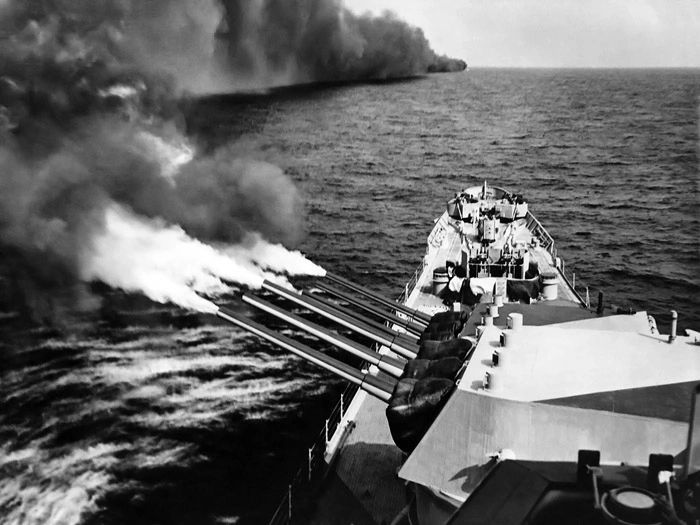
As Astoria underwent repairs in Philadelphia, the namesakes of the other ships lost at Savo Island were busy taking the fight to the Axis Powers. Above: Heavy cruiser Quincy CA-71 fires her main battery against German emplacements in Normandy, June 1944. She went on to participate in Operation DRAGOON, the invasion of Southern France.
-U.S. Navy photo in Brent Jones collection
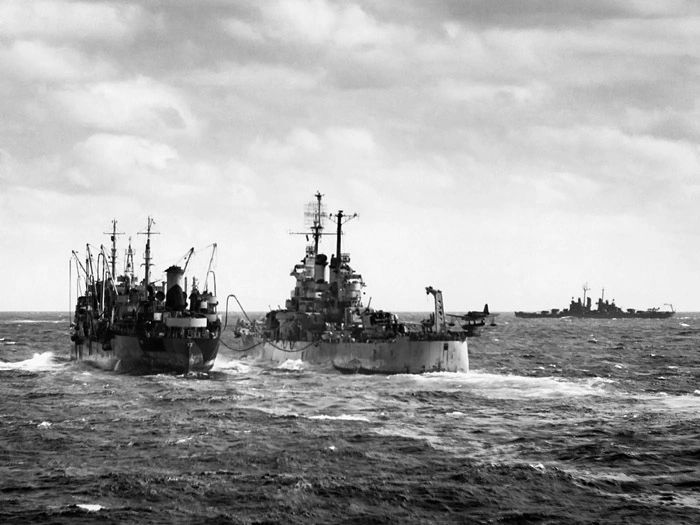
Named for the third American cruiser lost at Savo Island, Vincennes CL-64 fuels from Millicoma AO-73 during Philippine Island operations in September 1944. Sister light cruiser Santa Fe CL-60 is at right. Taken from USS Essex CV-9.
-photo taken by Paul Madden, courtesy of Herman Schnipper
24 July 1944
USS Astoria's number two turbine was ruined. The bearing problem had not been identified quickly enough to prevent extensive damage. As a result, the ship spent a lengthy post-shakedown overhaul at the Philadelphia Navy Yard while the turbine was cut out of the hull and repaired.
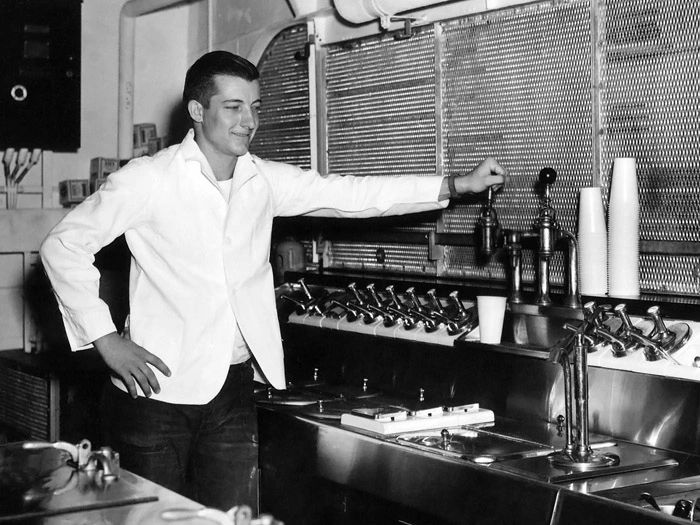
With Astoria laid up for replacement of a turbine engine, Herman Schnipper had an opportunity to further get to know his Navy-issue camera and the ship's crew. Above: S1/c James H. DuBose poses at the ship's gedunk stand.
Below: Coxswain S.F. Dargiewicz in the ship's sail locker. Both photos date to August 1944.
-photos taken by and courtesy of Herman Schnipper
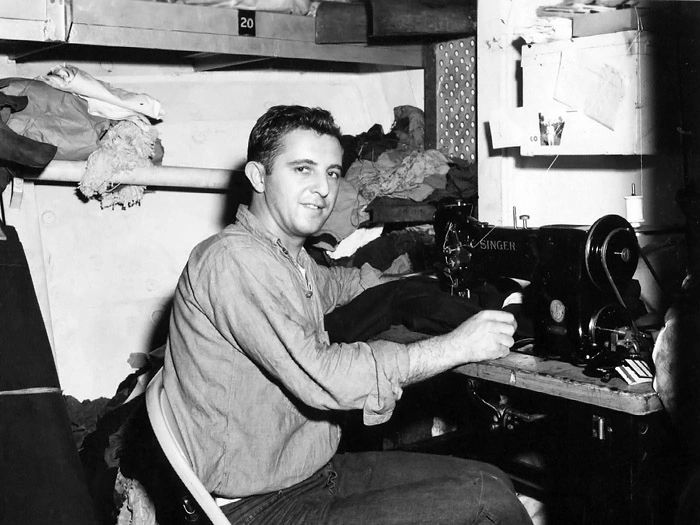
10 September 1944
After seven full weeks moored to the starboard side of Pier Two at the Philadelphia Navy Yard, USS Astoria got underway in the Delaware River for trials on her new turbine. Much like her very first run down the river, she proceeded to Brandywine Shoal and headed back. Her tests on the new engine were successful.
14 September 1944
Astoria docked at the Fort Mifflin Naval Ammunition Storage Depot across the Schuykill River from Philadelphia Navy Yard. As the crew loaded the ship's magazines with shells and powder, they did so in gale-force winds. A strong hurricane was making its way up the East Coast and passed very close by on this date. The storm, later known as the 1944 Great Atlantic Hurricane, made landfall on the New Jersey shore with devastating results.
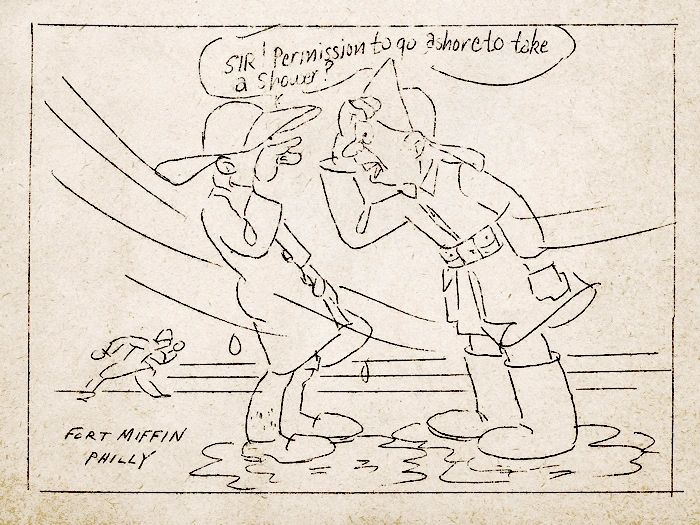
By the time Astoria left Philadelphia Navy Yard, shipmate Joseph Aman was drawing daily cartoons for the Astoria Morning Press news publication. Many of his cartoons revolved around the actual experiences of the ship, such as this entry from 15 September 1944--the morning after Astoria sailors loaded ammunition from Fort Mifflin in near-hurricane conditions.
-Joseph Aman cartoon courtesy of Jim Peddie
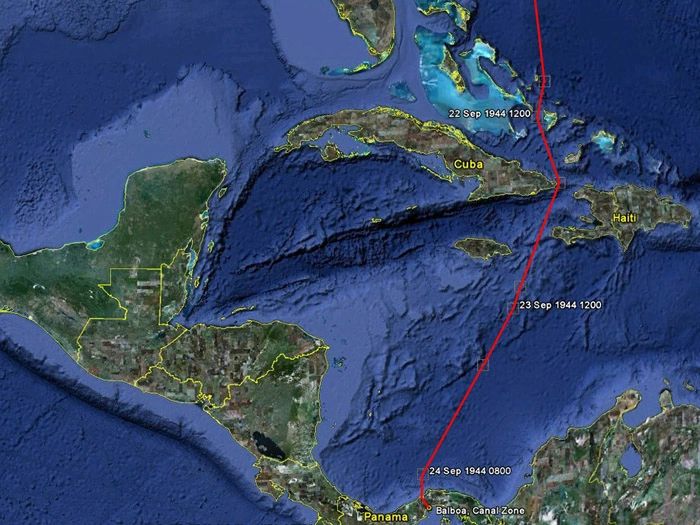
Astoria put to sea on 20 September 1944. Her course took her past the eastern tip of Cuba to the Panama Canal, which she crossed on 24 September. The next day her crew took liberty at Balboa, C.Z.
-manipulated from Google Earth imagery
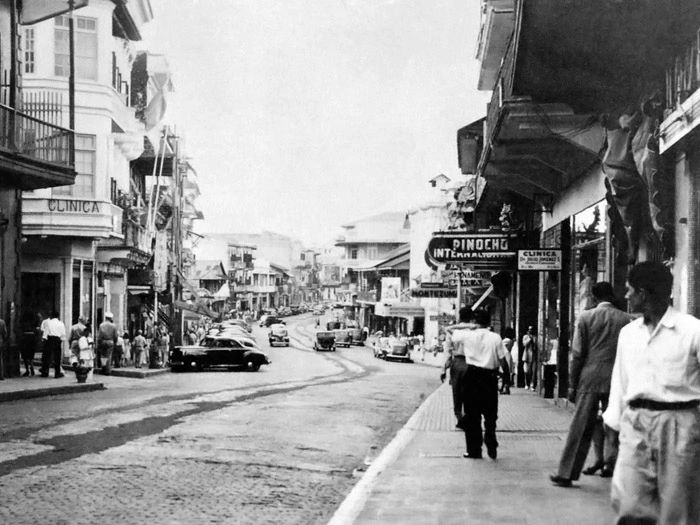
Above and below: Balboa, Panama was very much a "liberty town," with plenty of places for a sailor to spend his money.
-photos courtesy of Herman Schnipper
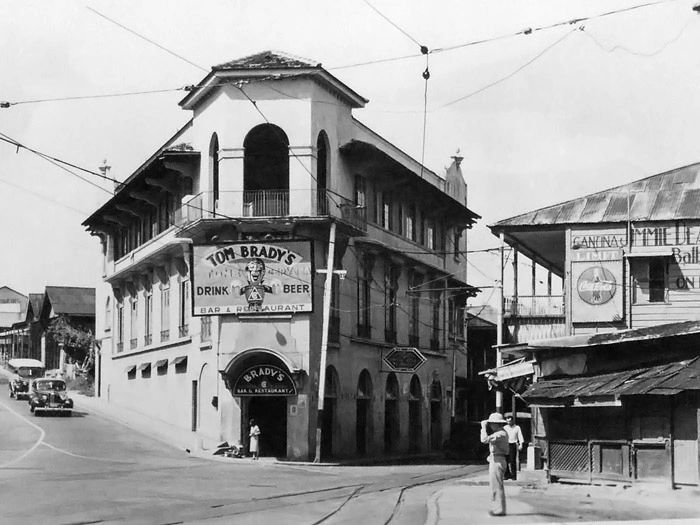
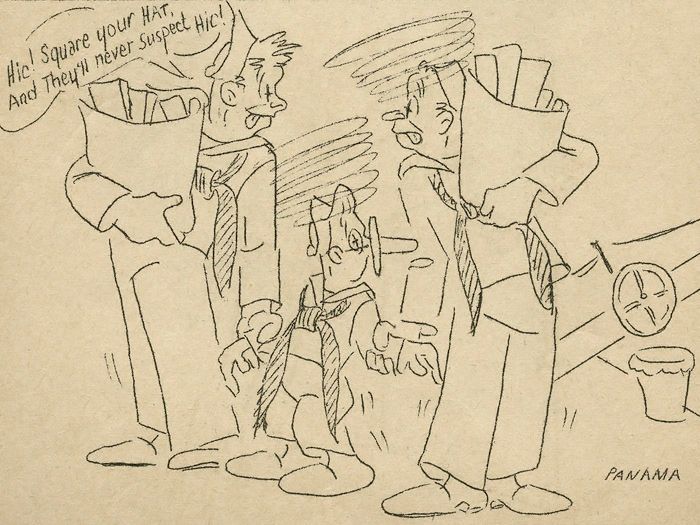
Joe Aman introduced a recurring character for his daily cartoons. The character was Apprentice Seaman Joey Fubar, and his antics reflected his last name's origin (the polite version of which is "Fouled Up Beyond All Recognition.") Following his Balboa liberty, a thoroughly liquored up Joey Fubar returns aboard with two shipmates.
-Joseph Aman cartoon courtesy of Jim Peddie

There was a more serious side to Aman's work as well. Above: Cover artwork that Aman created for the ship's surface and aerial recognition manuals in September 1944. Below: Silhouette recognition chart of Japanese surface vessels.
-documents courtesy of Herman Schnipper
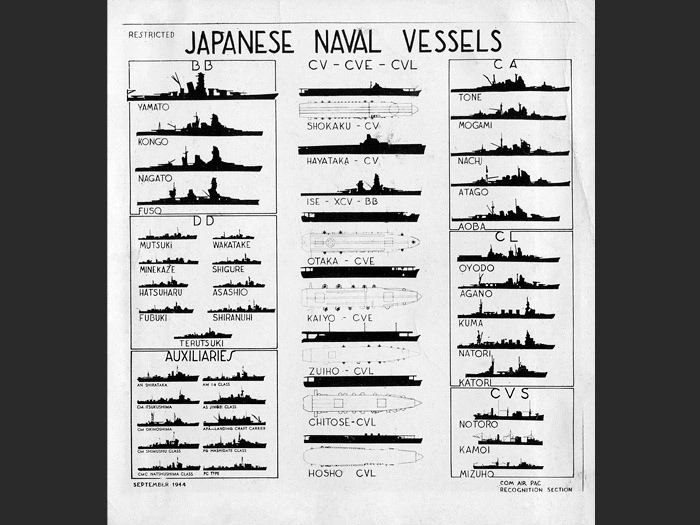
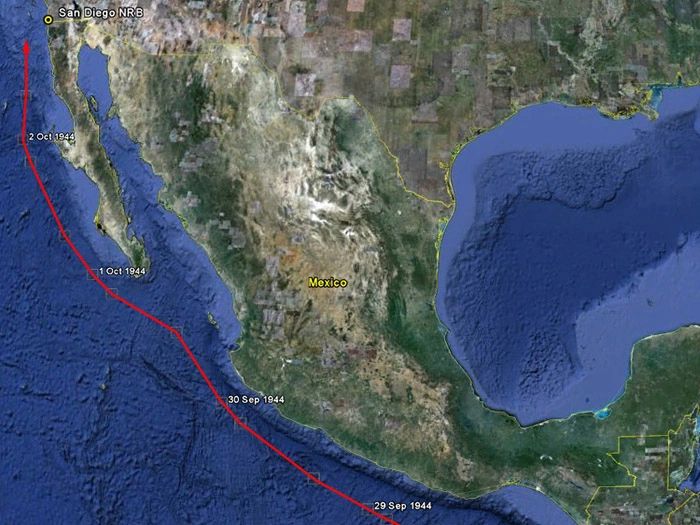
Once through the Panama Canal, USS Astoria steamed up the west coast of Mexico bound for San Diego.
-manipulated from Google Earth imagery
3 October 1944
While conducting drills off San Diego in the morning hours, the after bearing on Astoria's number four turbine failed. The crew reacted well to this repeat of her shakedown cruise casualty, and the turbine was shut down before major damage could occur. Once again down an engine, Astoria put in at San Diego so Captain Dyer could discuss his next move for a ship with an obvious construction defect.
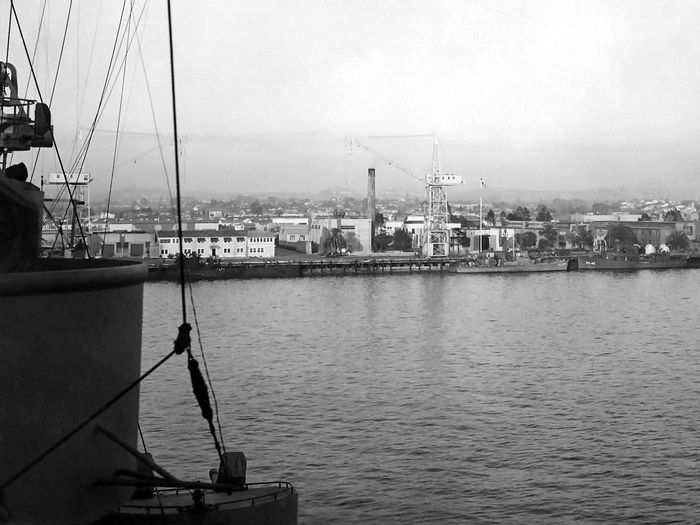
USS Astoria docks at the Naval Repair Base, San Diego on 3 October for inspection of her second turbine casualty. Discussion of this second casualty went as high as ADM Ernest King, Commander-in-Chief U.S. Fleet.
-photo taken by and courtesy of Herman Schnipper
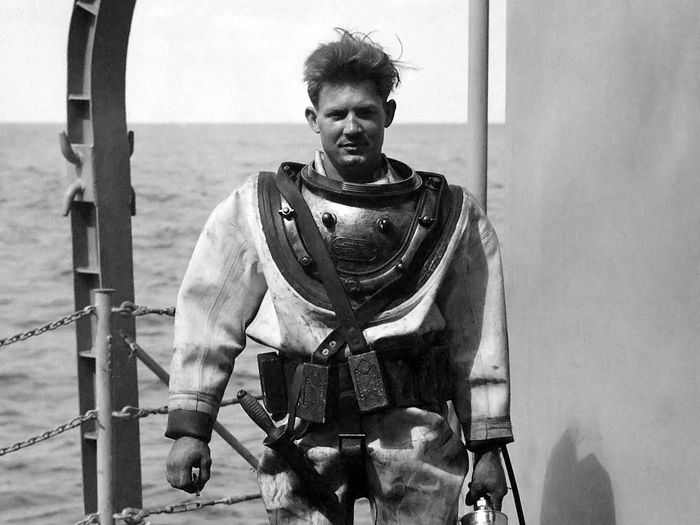
BM1/c George M. Ray, USS Astoria Senior Diver in a photo taken on 3 October 1944. Ray dove below the ship to inspect the hull and investigate a possible bent propeller blade.
-photo taken by and courtesy of Herman Schnipper
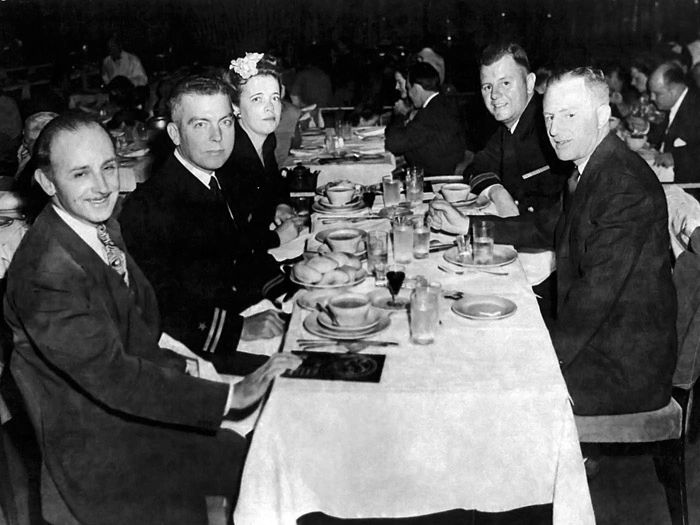
While awaiting a decision regarding Astoria's damaged power plant, Gunnery Department officers Earl Shopen (left) and Kenneth Meneke siezed the opportunity to take a train to Los Angeles. There they met friends and family for dinner at the Earl Carroll Theater in Hollywood on 4 October 1944.
-photo courtesy of Maggie Thompson
5 October 1944
The decision was made to send Astoria up to the San Francisco bay area for repair and evaluation at Mare Island Navy Yard. Engineering representatives from the Navy as well as General Electric, manufacturer of the turbine engine, would meet the ship at Mare Island for the repair work.
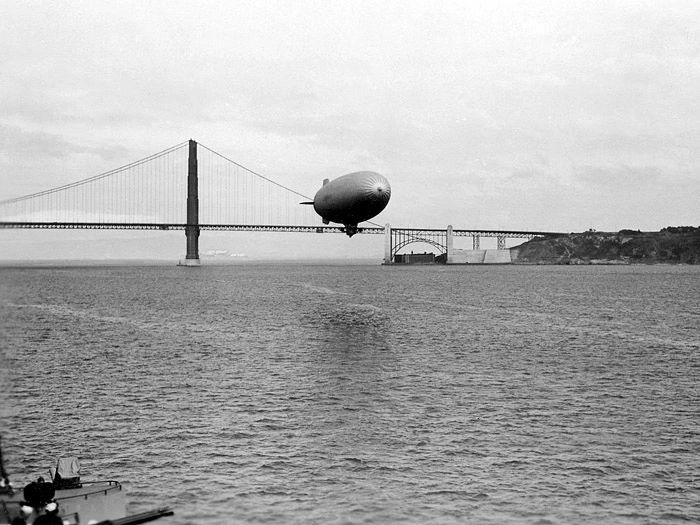
A U.S. Navy airship patrols at low altitude as Astoria enters the San Francisco main ship channel on 7 October 1944. Navy K-series airships performed antisubmarine patrols in stateside port areas throughout the war.
-photo taken by and courtesy of Herman Schnipper
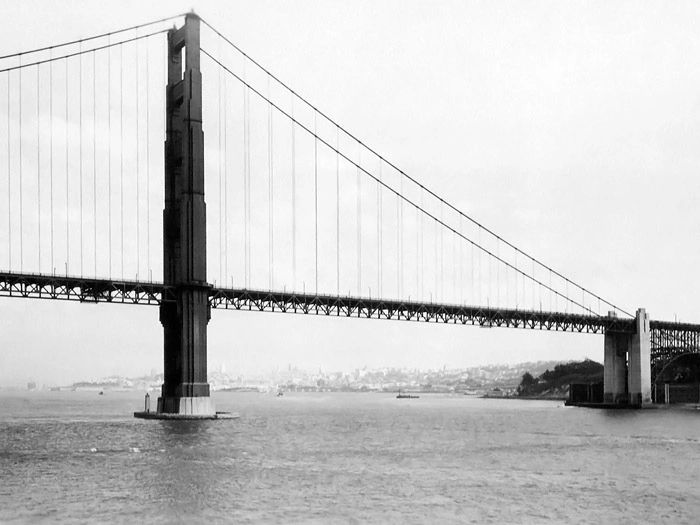
USS Astoria passes under the Golden Gate Bridge at 1300 on 7 October 1944.
-photo taken by and courtesy of Herman Schnipper
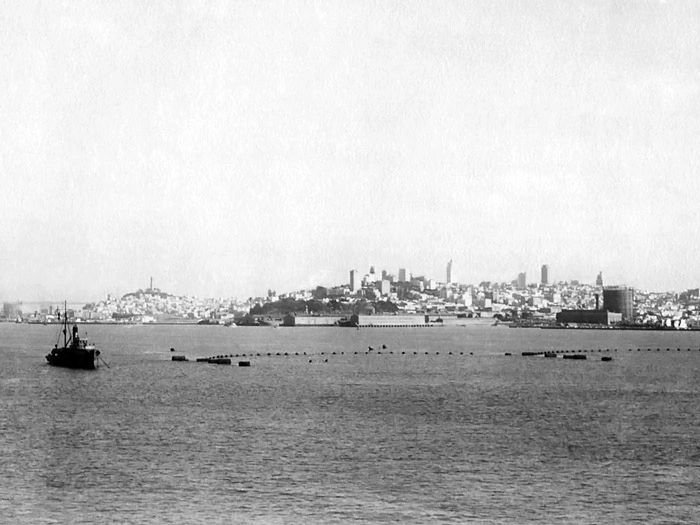
San Francisco as seen from Astoria on 7 October 1944.
-photo taken by and courtesy of Herman Schnipper
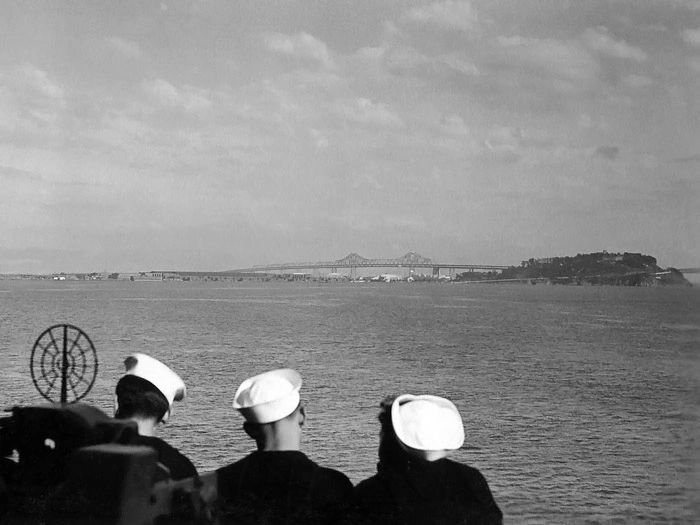
Astoria sailors look across San Francisco Bay at the east span of the Oakland Bay Bridge. Yerba Buena Island is at right, with man-made Treasure Island stretching to the left.
-photo taken by and courtesy of Herman Schnipper

Astoria heads north toward San Pablo Bay. Angel Island is at left with the Golden Gate Bridge visible in the distance through Raccoon Straits.
-photo taken by and courtesy of Herman Schnipper
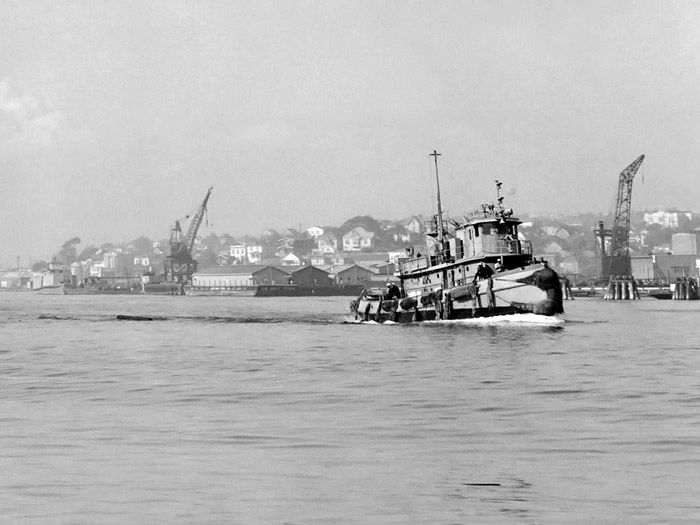
A harbor tug in the Mare Island Strait. Vallejo, California fills the background.
-U.S. Navy photo in National Archives record group 19-LCM
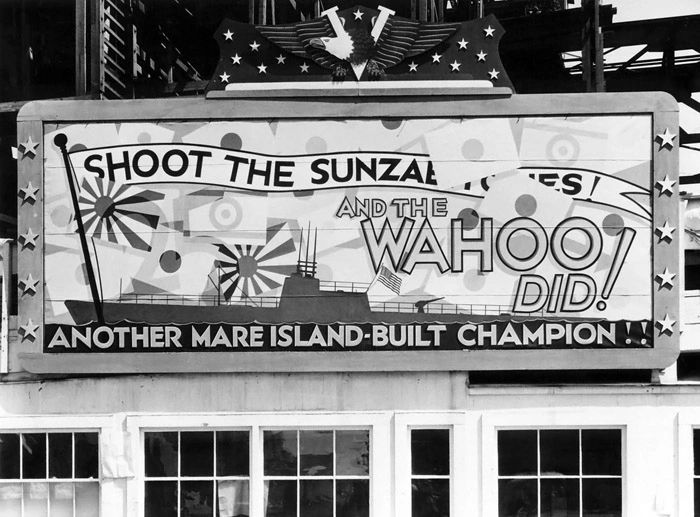
Mare Island Navy Yard built a significant number of American submarines during the war. This motivational sign for yard employees celebrated the success of USS Wahoo SS-238 into 1944, even though Wahoo was sunk by the Japanese in October 1943.
-U.S. Navy photo in Brent Jones collection

Once Astoria was moored at Mare Island, her number four low pressure turbine was dismantled. This photo shows the burned out bearing that caused the casualty.
-photo taken by and courtesy of Herman Schnipper
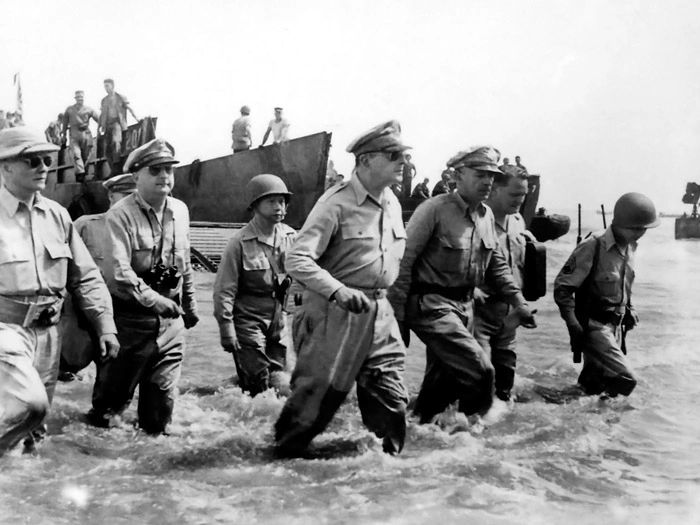
USS Astoria spent more than two weeks at Mare Island. While she waited out another lengthy repair, one of the most famous events of the Pacific War took place. On 20 October, Douglas MacArthur made his long-awaited return to the Philippine Islands, wading ashore at Leyte in dramatic fashion.
-U.S. Navy Photo reproduced from Wikimedia Commons
Continue to CHAPTER 6: THE MARE ISLAND PHOTOGRAPHS

CLICK ON PHOTO TO ADVANCE TO NEXT CHAPTER
BACK TO SHIP HISTORY
Sources:
Jones, Brent. Private photo and document collection.
National Archives and Records Administration WWII photo archive. www.archives.gov
Peddie, James. Private document collection.
Schnipper, Herman. Private photo and document collection.
Thompson, Maggie. Private photo collection.
Wikimedia Commons. http://commons.wikimedia.org/

As Astoria underwent repairs in Philadelphia, the namesakes of the other ships lost at Savo Island were busy taking the fight to the Axis Powers. Above: Heavy cruiser Quincy CA-71 fires her main battery against German emplacements in Normandy, June 1944. She went on to participate in Operation DRAGOON, the invasion of Southern France.
-U.S. Navy photo in Brent Jones collection

Named for the third American cruiser lost at Savo Island, Vincennes CL-64 fuels from Millicoma AO-73 during Philippine Island operations in September 1944. Sister light cruiser Santa Fe CL-60 is at right. Taken from USS Essex CV-9.
-photo taken by Paul Madden, courtesy of Herman Schnipper
24 July 1944
USS Astoria's number two turbine was ruined. The bearing problem had not been identified quickly enough to prevent extensive damage. As a result, the ship spent a lengthy post-shakedown overhaul at the Philadelphia Navy Yard while the turbine was cut out of the hull and repaired.

With Astoria laid up for replacement of a turbine engine, Herman Schnipper had an opportunity to further get to know his Navy-issue camera and the ship's crew. Above: S1/c James H. DuBose poses at the ship's gedunk stand.
Below: Coxswain S.F. Dargiewicz in the ship's sail locker. Both photos date to August 1944.
-photos taken by and courtesy of Herman Schnipper

10 September 1944
After seven full weeks moored to the starboard side of Pier Two at the Philadelphia Navy Yard, USS Astoria got underway in the Delaware River for trials on her new turbine. Much like her very first run down the river, she proceeded to Brandywine Shoal and headed back. Her tests on the new engine were successful.
14 September 1944
Astoria docked at the Fort Mifflin Naval Ammunition Storage Depot across the Schuykill River from Philadelphia Navy Yard. As the crew loaded the ship's magazines with shells and powder, they did so in gale-force winds. A strong hurricane was making its way up the East Coast and passed very close by on this date. The storm, later known as the 1944 Great Atlantic Hurricane, made landfall on the New Jersey shore with devastating results.

By the time Astoria left Philadelphia Navy Yard, shipmate Joseph Aman was drawing daily cartoons for the Astoria Morning Press news publication. Many of his cartoons revolved around the actual experiences of the ship, such as this entry from 15 September 1944--the morning after Astoria sailors loaded ammunition from Fort Mifflin in near-hurricane conditions.
-Joseph Aman cartoon courtesy of Jim Peddie

Astoria put to sea on 20 September 1944. Her course took her past the eastern tip of Cuba to the Panama Canal, which she crossed on 24 September. The next day her crew took liberty at Balboa, C.Z.
-manipulated from Google Earth imagery

Above and below: Balboa, Panama was very much a "liberty town," with plenty of places for a sailor to spend his money.
-photos courtesy of Herman Schnipper


Joe Aman introduced a recurring character for his daily cartoons. The character was Apprentice Seaman Joey Fubar, and his antics reflected his last name's origin (the polite version of which is "Fouled Up Beyond All Recognition.") Following his Balboa liberty, a thoroughly liquored up Joey Fubar returns aboard with two shipmates.
-Joseph Aman cartoon courtesy of Jim Peddie

There was a more serious side to Aman's work as well. Above: Cover artwork that Aman created for the ship's surface and aerial recognition manuals in September 1944. Below: Silhouette recognition chart of Japanese surface vessels.
-documents courtesy of Herman Schnipper


Once through the Panama Canal, USS Astoria steamed up the west coast of Mexico bound for San Diego.
-manipulated from Google Earth imagery
3 October 1944
While conducting drills off San Diego in the morning hours, the after bearing on Astoria's number four turbine failed. The crew reacted well to this repeat of her shakedown cruise casualty, and the turbine was shut down before major damage could occur. Once again down an engine, Astoria put in at San Diego so Captain Dyer could discuss his next move for a ship with an obvious construction defect.

USS Astoria docks at the Naval Repair Base, San Diego on 3 October for inspection of her second turbine casualty. Discussion of this second casualty went as high as ADM Ernest King, Commander-in-Chief U.S. Fleet.
-photo taken by and courtesy of Herman Schnipper

BM1/c George M. Ray, USS Astoria Senior Diver in a photo taken on 3 October 1944. Ray dove below the ship to inspect the hull and investigate a possible bent propeller blade.
-photo taken by and courtesy of Herman Schnipper

While awaiting a decision regarding Astoria's damaged power plant, Gunnery Department officers Earl Shopen (left) and Kenneth Meneke siezed the opportunity to take a train to Los Angeles. There they met friends and family for dinner at the Earl Carroll Theater in Hollywood on 4 October 1944.
-photo courtesy of Maggie Thompson
5 October 1944
The decision was made to send Astoria up to the San Francisco bay area for repair and evaluation at Mare Island Navy Yard. Engineering representatives from the Navy as well as General Electric, manufacturer of the turbine engine, would meet the ship at Mare Island for the repair work.

A U.S. Navy airship patrols at low altitude as Astoria enters the San Francisco main ship channel on 7 October 1944. Navy K-series airships performed antisubmarine patrols in stateside port areas throughout the war.
-photo taken by and courtesy of Herman Schnipper

USS Astoria passes under the Golden Gate Bridge at 1300 on 7 October 1944.
-photo taken by and courtesy of Herman Schnipper

San Francisco as seen from Astoria on 7 October 1944.
-photo taken by and courtesy of Herman Schnipper

Astoria sailors look across San Francisco Bay at the east span of the Oakland Bay Bridge. Yerba Buena Island is at right, with man-made Treasure Island stretching to the left.
-photo taken by and courtesy of Herman Schnipper

Astoria heads north toward San Pablo Bay. Angel Island is at left with the Golden Gate Bridge visible in the distance through Raccoon Straits.
-photo taken by and courtesy of Herman Schnipper

A harbor tug in the Mare Island Strait. Vallejo, California fills the background.
-U.S. Navy photo in National Archives record group 19-LCM

Mare Island Navy Yard built a significant number of American submarines during the war. This motivational sign for yard employees celebrated the success of USS Wahoo SS-238 into 1944, even though Wahoo was sunk by the Japanese in October 1943.
-U.S. Navy photo in Brent Jones collection

Once Astoria was moored at Mare Island, her number four low pressure turbine was dismantled. This photo shows the burned out bearing that caused the casualty.
-photo taken by and courtesy of Herman Schnipper

USS Astoria spent more than two weeks at Mare Island. While she waited out another lengthy repair, one of the most famous events of the Pacific War took place. On 20 October, Douglas MacArthur made his long-awaited return to the Philippine Islands, wading ashore at Leyte in dramatic fashion.
-U.S. Navy Photo reproduced from Wikimedia Commons
Continue to CHAPTER 6: THE MARE ISLAND PHOTOGRAPHS

CLICK ON PHOTO TO ADVANCE TO NEXT CHAPTER
BACK TO SHIP HISTORY
Sources:
Jones, Brent. Private photo and document collection.
National Archives and Records Administration WWII photo archive. www.archives.gov
Peddie, James. Private document collection.
Schnipper, Herman. Private photo and document collection.
Thompson, Maggie. Private photo collection.
Wikimedia Commons. http://commons.wikimedia.org/
